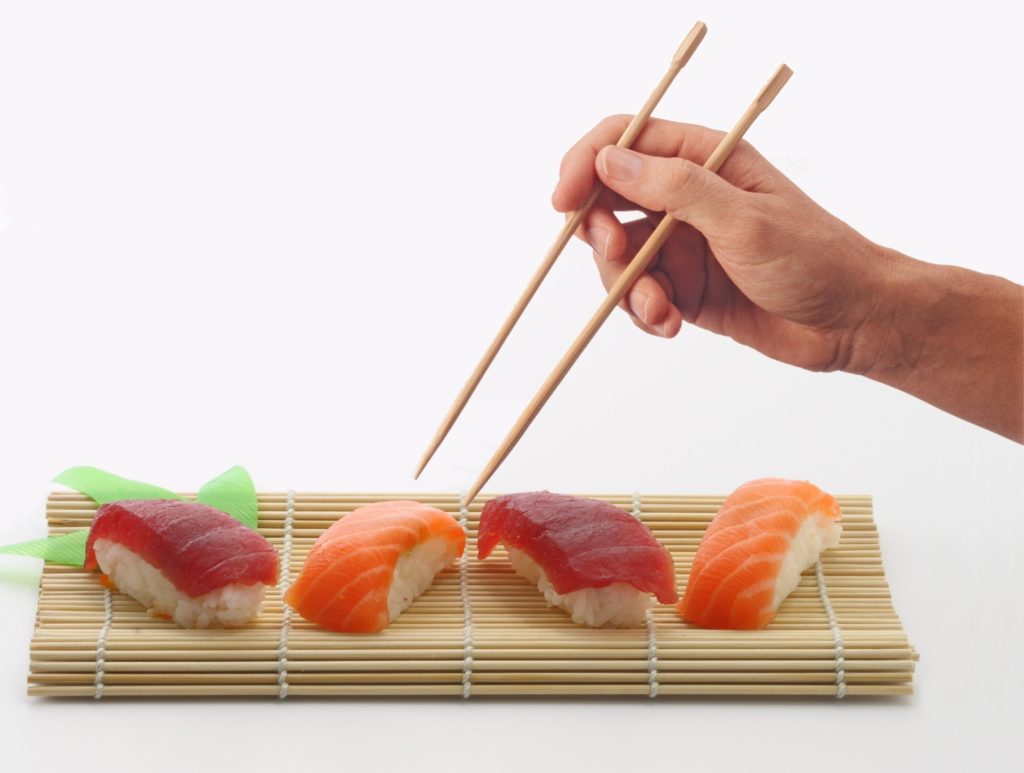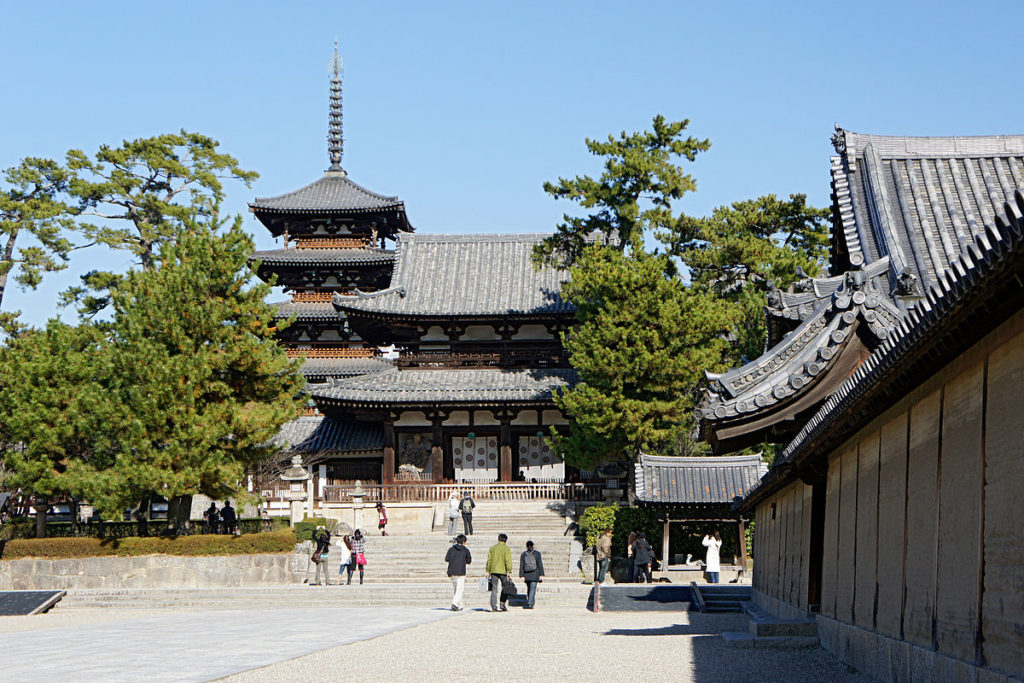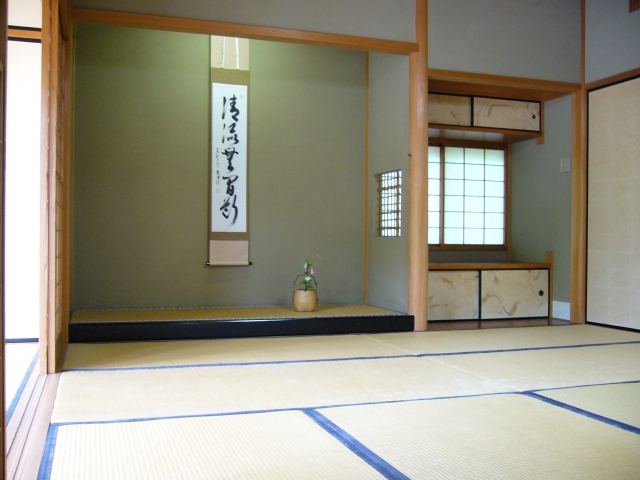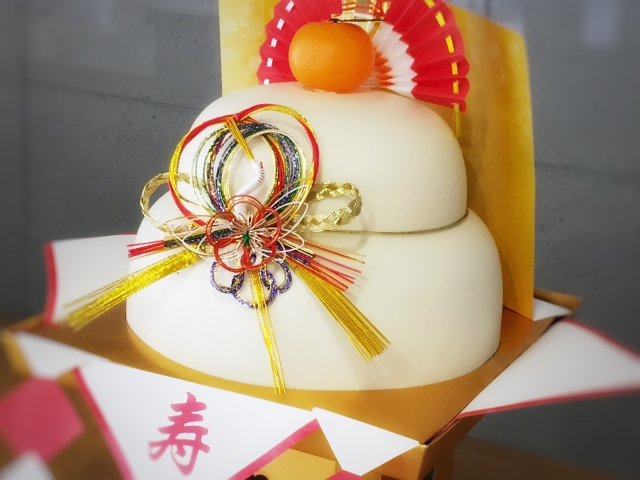
“Kagami-mochi” is a traditional Japanese New Year’s decoration in which mochi(rice cakes) are offered to the Kamis and Buddha.
The name “Kagami-mochi” is derived from its resemblance to the shape of an old mirror, which was thought to be the boundary between this world and the next.
“Kagami-mochi” was first offered in its present form in the Muromachi period (1336-1573), when tokonoma (alcove) were built in houses.
The two round mochi(rice cakes), one large and one small, are meant to symbolize a happy new year.
It is also said that the reason why two mochi are placed one on top of the other is because they represent the moon (yin) and the sun (yang), which is thought to be a good omen of good fortune.
It is also said that the round shape of the Kagami-mochi symbolizes the heart, and that the Kamis of the year were used to help regenerate the soul.
How to Decorate Kagami-mochi
There are differences in the way Kagami-mochi are decorated in different regions.
The most common ways to decorate Kagami-mochi are as follows.
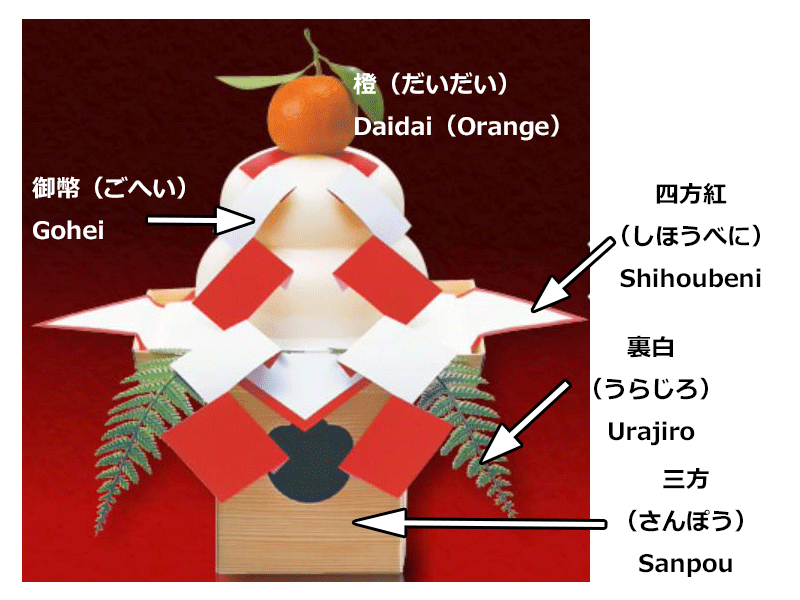
- Orange(Daidai): Hoping that the descendants will look good for generations to come
- Gohei: Red is to ward off evil,wishing for prosperity
- Shihobeni: To ward off misfortune and wish for prosperity
- Urajiro: wish for long life
- Sanpo: A stand on which the Kamis are placed (to be presented to the Kami of the year)
The best day to start decorating Kagami-mochi is December 28th, although it doesn’t matter how early you start.
This is because “eight” is a good number in Japan because it represents the end of the world.
Cutting the Kagami-mochi
“Kagami-biraki” is an event in which Kagami-mochi, which were offered to the Kamis and Buddha on New Year’s Day, are lowered and eaten.
The day on which the Kagami-mochi is lowered varies from region to region, but it is usually held on January 11th.
Cutting the Kagami-mochi with a knife is reminiscent of committing “Seppuku”, so the Kagami-mochi is split with a hand or a wooden hammer, and the word “open” is used to avoid the word “cut” or “split”.
Translated with www.DeepL.com/Translator (free version)
It is said that on New Year’s Day, the New Year Kami appears to give new life to all people and things.
It is a custom to receive new life by eating Kagami-mochi, as the spiritual power of the New Year’s Kami resides in the Kagami-mochi that are offered to the Kamis.
It is eaten as shiruko, ozoni, and arare (oyster cakes).
Our ancestors bequeathed their thoughts in the form of their daily habits.
Perhaps they wanted to convey the custom of being alive and grateful to the people around us when we decorate or receive them.


